 Web Front-end
Web Front-end
 JS Tutorial
JS Tutorial
 How to build an app using react? Details of the steps to build large-scale applications with React+Redux
How to build an app using react? Details of the steps to build large-scale applications with React+Redux
How to build an app using react? Details of the steps to build large-scale applications with React+Redux
This article mainly introduces how to build large-scale applications with react redux. Now let's take a look at the content of the article
Background
Our team has a project that takes a long time to develop and uses a mixed development method of front and back ends. The maintenance cost is very high and it is exposed online. There are many problems. And because it is connected to more than 100 product lines of the company, it receives a large number of customer complaints and product line feedback issues every day. In November 2017, we took the product as the lead, redesigned the process from the product level, and reconstructed the front and back ends of the project. As the person in charge of the front-end, I use this article to share some of my experiences in the entire process from technology selection, development, and launch.
Thinking about technology selection
First of all, let’s take a look at the following pages of our project to summarize some of their characteristics.



# Our pages mainly require users to fill in forms. There is no need to request and render a large amount of data when the page is loaded. Moreover, a page needs to display many states (for example, the three pictures above are a component in the project). There is also the most important business requirement. Baidu has many internal product lines, and different businesses have their own unique account labels. In addition to some common processes, these accounts also go through some processes that correspond to the characteristics of the product lines.
Combining these business characteristics and previous development experience with Nodejs and React, my overall technology selection is FIS3 Nodejs React Redux React-Router. So what can these technology selections bring?
The front-end can control the routing of page jumps on the browser side, which increases the flexibility of front-end development;
The page can be customized according to business needs Select template engine rendering or isomorphic rendering in the service;
The front-end manages error code copy and page copy in a unified manner, and uses Nodejs to "hot update" them offline. It takes effect online in real time;
With Redux, it is more convenient to share data across components (multiple pages). Reduce meaningless network requests. Improve the stability and availability of project operations.
Here we will briefly talk about the selection of engineering tools. The most popular engineering tool in the industry right now is Webpack. Apart from reading the documentation, I don't have much practical application experience. I have always believed that using tools is to help developers solve some unobjectionable tasks encountered during the development process that require frequent manual operations. Regardless of Webpack, we can still manually compile the code, manually deploy, and manually refresh the page for development. Using tools only makes this series of processes coherent and reduces development costs.
In all my company-related projects, I choose FIS3. I also think it is easy to use and can meet my various engineering needs. I'm not against Webpack. I just haven't found a reason to give up the FIS3 I'm currently using and use Webpack.
The difference between the old and new framework mechanisms
Here is a brief introduction to some differences in the rendering mechanism of the rendering page after deciding on the technology selection.
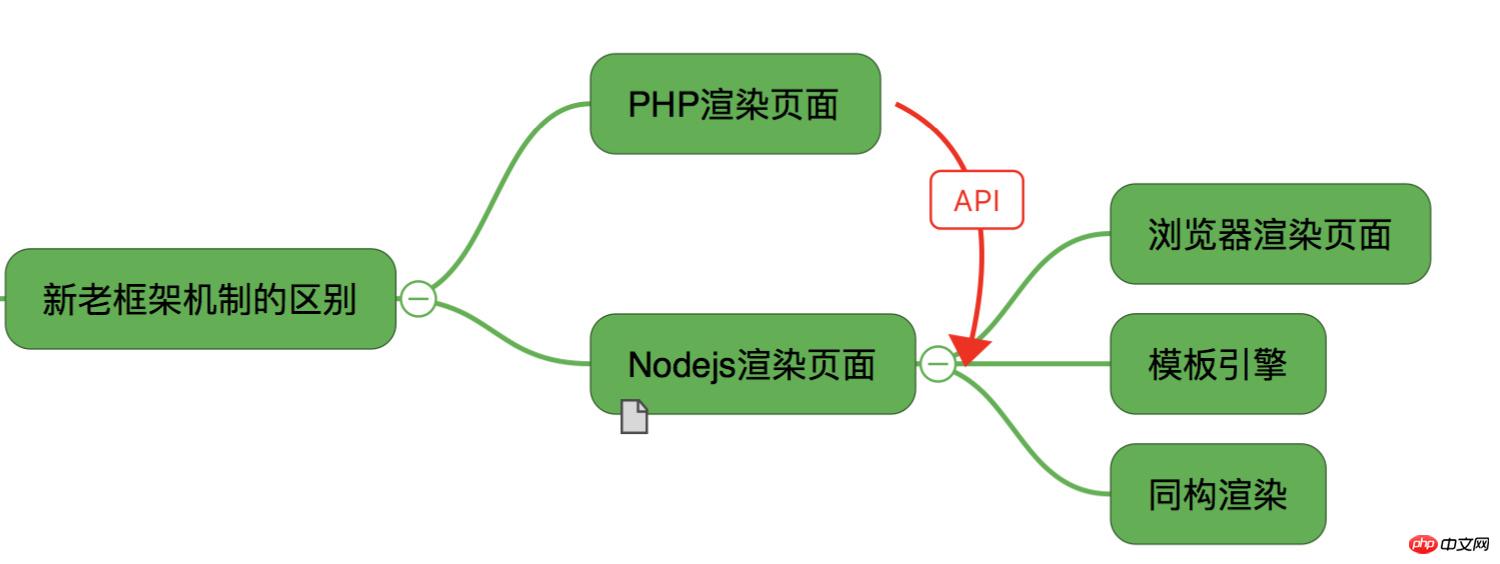
The old project used PHP Smarty's rendering mode to spit out the page to the front-end browser after the server-side rendering was completed. After using the new technical architecture, the way we render pages is more flexible. You can choose to render on the server side, leave it entirely to the browser for rendering, or render isomorphically. Because our page does not need to load a lot of data when it is on the first screen, I still let most pages be rendered on the browser side.
Another difference is that all previous requests from users will fall on the PHP server. Requests for the new framework will fall to the front-end Nodejs server. So front-end engineers are not just about writing good pages and ensuring compatibility. It will also test the technical capabilities of front-end engineers.
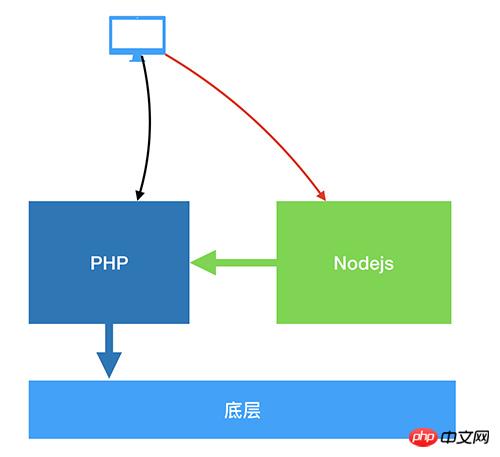
The convenience that React brings to the front-end
Front-end control routing rendering page
The technology selection discussed earlier has already mentioned the use of React- Router does page routing control. Moreover, React-Router provides the function of asynchronous loading of components, which provides a technical basis for the asynchronous loading of our online optimized pages.
<Route path="/v4/appeal/fillname" component={FillName} />
{* 这里对某些组件做异步加载 *}
<Route
path="/v4/appeal/selectuser"
getComponent={selectUser()}
/>function selectUser() {
return (location, cb) => { require(['../accountselect/container/AccountSelect'], function (component) {
cb(null, component);
});
};
}In addition to the front-end code for routing control through React-Router, the server may also do some configuration. Otherwise, our page will have problems when it is rolled back (the page cannot find the route). In fact, it is to control routing in what we usually call action. Because I am using Nodejs, my configuration is as follows.
router.get('/fillname', router.action('index')); router.get('/selectuser', router.action('index'));
Event
In front-end events, I briefly used Preact because of issues with the open source protocol. The biggest difference between React and Preact is the encapsulation of some events. These make Preact much smaller than React.
When doing mobile terminal development, a problem that the front end often faces is the click event 300ms delay problem. The onClick event provided in React will also have such a problem. If we want feedback to appear immediately in other places after clicking a button, it is best to use the onTouchEnd event, or use the open source Npm package react-fastclick which is very good Solve the click event300ms delay problem.
The method used is to declare the following statement at the entrance of our code, which will change the behavior of react's onClick event by default
import initReactFastclick from 'react-fastclick'; initReactFastclick();
Design of the component
A problem you may face when using React is whether my component should be stateless or stateful. How to share my component state. When should I use Redux to manage component state. You may have such questions when you first come into contact with react.
A more extreme approach is to use Redux to manage all states of components, regardless of whether the state needs to be shared or not. This approach means that we need to write a lot of Actions. If it's one or two pages, it's okay. If it's more than a dozen pages, actually writing actions can make people crash.
So what are the best practices? Look at the picture below

When we want to write a component, first think about whether this component needs to share its own state with other components. If necessary we should design it as a stateful component, and the shared state is managed using Redux. If it is simply a stateless component or the state change of the component itself will not affect other components, the component can be designed as a stateless component (although it is called a stateless component, in fact, the state of the component itself can also be used this .state to manage).
Reuse relationship of components
One of the hot spots in React is the component development idea. As small as a button on the page can be designed as a component. Since it is a component, we should first consider how this component can be reused by other components. (If you want to see more, go to the PHP Chinese website React Reference Manual column to learn)
Give a simple example of the pop-up component that will be used in the entire project:
class AlertForm extends Component {
constructor(props) {
super(props); this.state = {
showlayout: false, // false 以tip的方式提示错误, true以弹层的方式提示错误
btnlist: false,
formbtn: false
};
}
componentWillReceiveProps(nextProps) {
}
handleHideLayout = () => {
}
handleMobile = () => {
}
handleChangeCheck = () => {
history.go(-1);
}
render() { return ( <p className="component-alertform" style={this.
state.showlayout ? {display: 'block'} : {display: 'none'}}>
</p>
);
}
}
export default AlertForm;We abstract this component that may be used on other pages separately and import where needed.
import AlertForm from '../../components/AlertForm';<AlertForm errno={errno}
stateObj={fillAppealName}
actions={actions}/>Development environment and production environment packaging optimization
One of the tasks that must be done after completing the project is optimization before going online. The main work I did before going online is as follows:
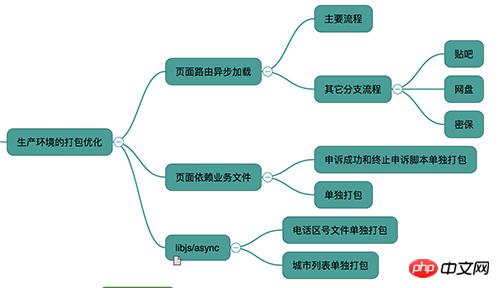
# As mentioned earlier, most users just follow some common processes. Some users with product line characteristics will go through some special processes. Therefore, you must unpack and asynchronously load components before going online. The specifics have been mentioned before. When packaging, the js of these pages need to be processed separately using packaging tools.
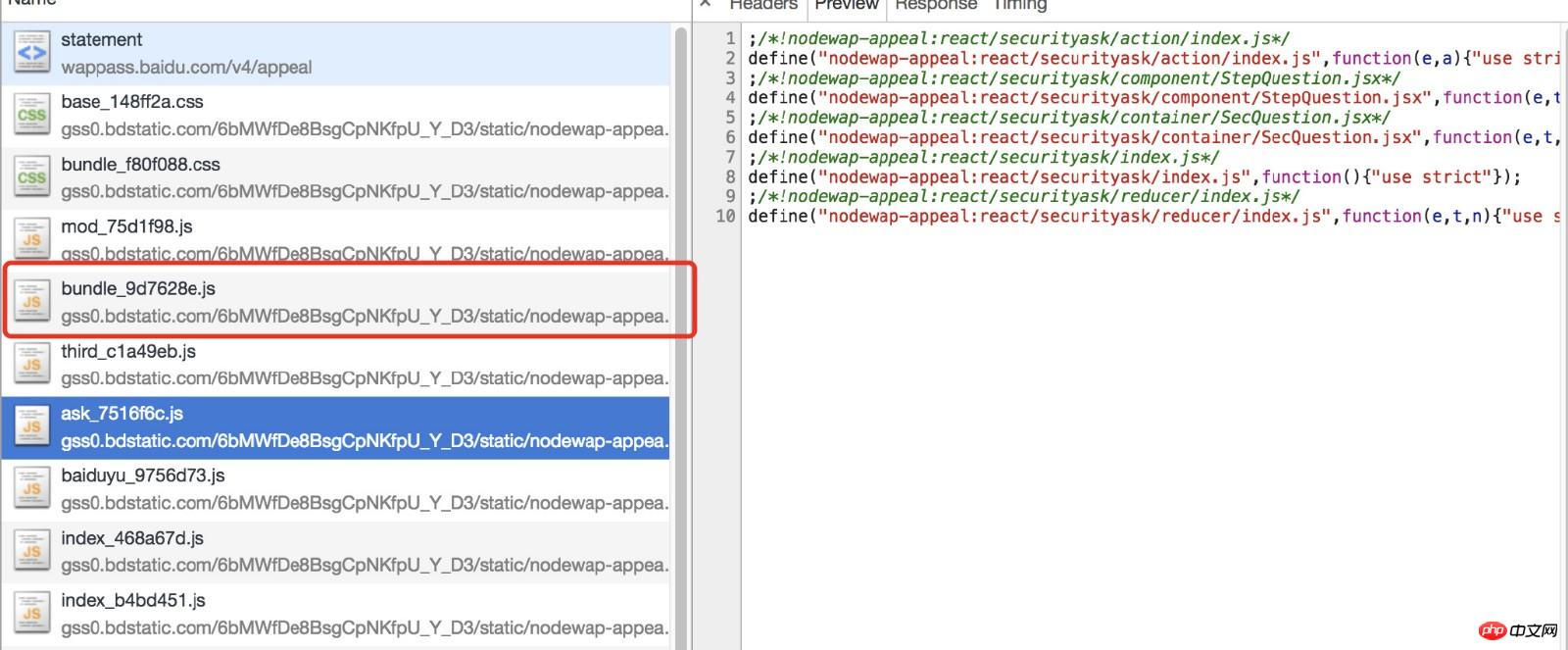
In fact, in addition to these pages that need to be loaded asynchronously, there will also be some other self-written lib libraries (small functions written by yourself). There are also, for example, the correspondence between provinces, cities and regions across the country, and the correspondence between telephone area codes. Because these functions or regional relationship maps will basically not change after they go online, they are packaged separately from the business js.
Our packaged configuration files are as follows:
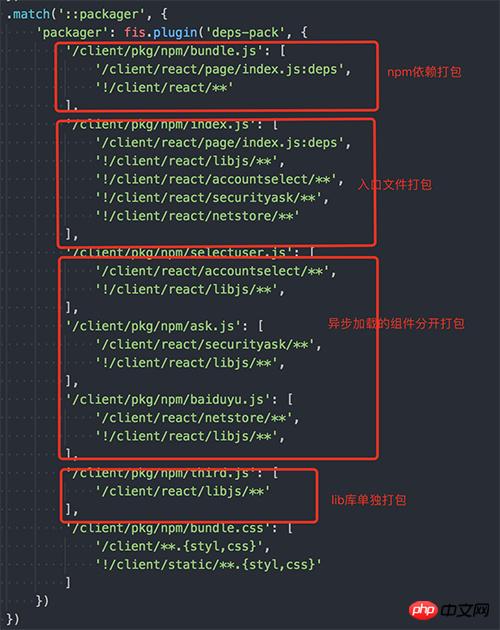
Operation and maintenance
As mentioned earlier, we have talked about using Nodejs. The middle layer does routing control and server-side rendering. The picture below is the real-time status diagram of the above services captured when I wrote this article. It can be found that the memory and disk IO utilization of the entire application is still very normal, but the CPU utilization is a bit high, which is also an area that needs to be optimized in the future.
What I want to say here is that if you use Nodejs and server-side rendering, the personal quality requirements for front-end engineers will be relatively high because they need to deal with many server-side issues. I also shared an article before about dealing with security work orders. We not only have to face server-side issues, but also face issues from Internet security.
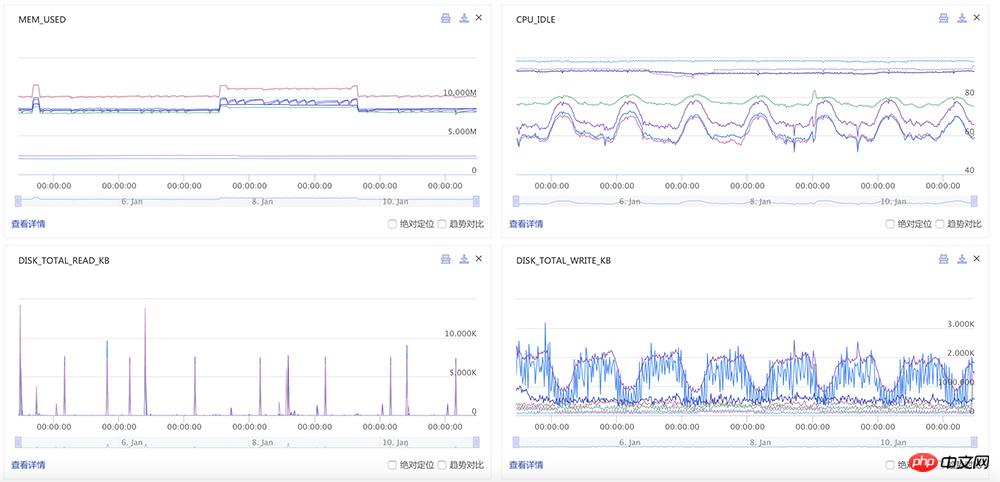
Other capabilities added
Use Nodejs in addition to server-side rendering. I also do some other work using Nodejs. 
For example, I use Nodejs to manage such a JSON file on the server side. The PHP side no longer maintains error codes and error code display copy. All front-end display copywriting needs to be placed on the Nodejs side for unified management. Moreover, I can also dynamically update these error copywriting through the system offline. Improve system availability.
 This article ends here (if you want to see more, go to the React User Manual column of the PHP Chinese website to learn). If you have any questions, you can leave a message below.
This article ends here (if you want to see more, go to the React User Manual column of the PHP Chinese website to learn). If you have any questions, you can leave a message below.
The above is the detailed content of How to build an app using react? Details of the steps to build large-scale applications with React+Redux. For more information, please follow other related articles on the PHP Chinese website!

Hot AI Tools

Undresser.AI Undress
AI-powered app for creating realistic nude photos

AI Clothes Remover
Online AI tool for removing clothes from photos.

Undress AI Tool
Undress images for free

Clothoff.io
AI clothes remover

Video Face Swap
Swap faces in any video effortlessly with our completely free AI face swap tool!

Hot Article

Hot Tools

Notepad++7.3.1
Easy-to-use and free code editor

SublimeText3 Chinese version
Chinese version, very easy to use

Zend Studio 13.0.1
Powerful PHP integrated development environment

Dreamweaver CS6
Visual web development tools

SublimeText3 Mac version
God-level code editing software (SublimeText3)

Hot Topics
 HTML Table Layout
Sep 04, 2024 pm 04:54 PM
HTML Table Layout
Sep 04, 2024 pm 04:54 PM
Guide to HTML Table Layout. Here we discuss the Values of HTML Table Layout along with the examples and outputs n detail.
 HTML Input Placeholder
Sep 04, 2024 pm 04:54 PM
HTML Input Placeholder
Sep 04, 2024 pm 04:54 PM
Guide to HTML Input Placeholder. Here we discuss the Examples of HTML Input Placeholder along with the codes and outputs.
 Vue.js vs. React: Project-Specific Considerations
Apr 09, 2025 am 12:01 AM
Vue.js vs. React: Project-Specific Considerations
Apr 09, 2025 am 12:01 AM
Vue.js is suitable for small and medium-sized projects and fast iterations, while React is suitable for large and complex applications. 1) Vue.js is easy to use and is suitable for situations where the team is insufficient or the project scale is small. 2) React has a richer ecosystem and is suitable for projects with high performance and complex functional needs.
 React's Role in HTML: Enhancing User Experience
Apr 09, 2025 am 12:11 AM
React's Role in HTML: Enhancing User Experience
Apr 09, 2025 am 12:11 AM
React combines JSX and HTML to improve user experience. 1) JSX embeds HTML to make development more intuitive. 2) The virtual DOM mechanism optimizes performance and reduces DOM operations. 3) Component-based management UI to improve maintainability. 4) State management and event processing enhance interactivity.
 HTML5 Interview Questions
Sep 04, 2024 pm 04:55 PM
HTML5 Interview Questions
Sep 04, 2024 pm 04:55 PM
HTML5 Interview Questions 1. What are HTML5 multimedia elements 2. What is canvas element 3. What is geolocation API 4. What are Web Workers
 What Does H5 Refer To? Exploring the Context
Apr 12, 2025 am 12:03 AM
What Does H5 Refer To? Exploring the Context
Apr 12, 2025 am 12:03 AM
H5referstoHTML5,apivotaltechnologyinwebdevelopment.1)HTML5introducesnewelementsandAPIsforrich,dynamicwebapplications.2)Itsupportsmultimediawithoutplugins,enhancinguserexperienceacrossdevices.3)SemanticelementsimprovecontentstructureandSEO.4)H5'srespo
 Is h5 same as HTML5?
Apr 08, 2025 am 12:16 AM
Is h5 same as HTML5?
Apr 08, 2025 am 12:16 AM
"h5" and "HTML5" are the same in most cases, but they may have different meanings in certain specific scenarios. 1. "HTML5" is a W3C-defined standard that contains new tags and APIs. 2. "h5" is usually the abbreviation of HTML5, but in mobile development, it may refer to a framework based on HTML5. Understanding these differences helps to use these terms accurately in your project.
 React and the Frontend: Building Interactive Experiences
Apr 11, 2025 am 12:02 AM
React and the Frontend: Building Interactive Experiences
Apr 11, 2025 am 12:02 AM
React is the preferred tool for building interactive front-end experiences. 1) React simplifies UI development through componentization and virtual DOM. 2) Components are divided into function components and class components. Function components are simpler and class components provide more life cycle methods. 3) The working principle of React relies on virtual DOM and reconciliation algorithm to improve performance. 4) State management uses useState or this.state, and life cycle methods such as componentDidMount are used for specific logic. 5) Basic usage includes creating components and managing state, and advanced usage involves custom hooks and performance optimization. 6) Common errors include improper status updates and performance issues, debugging skills include using ReactDevTools and Excellent





